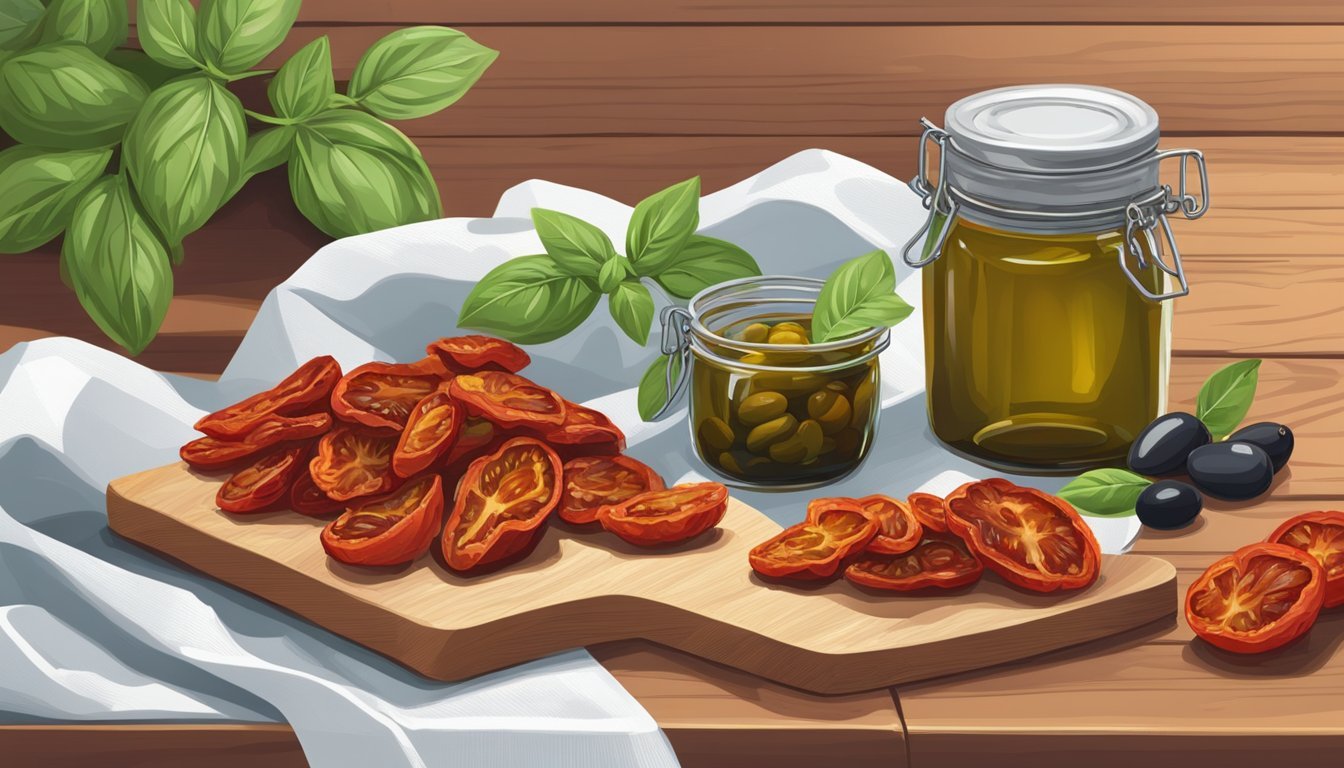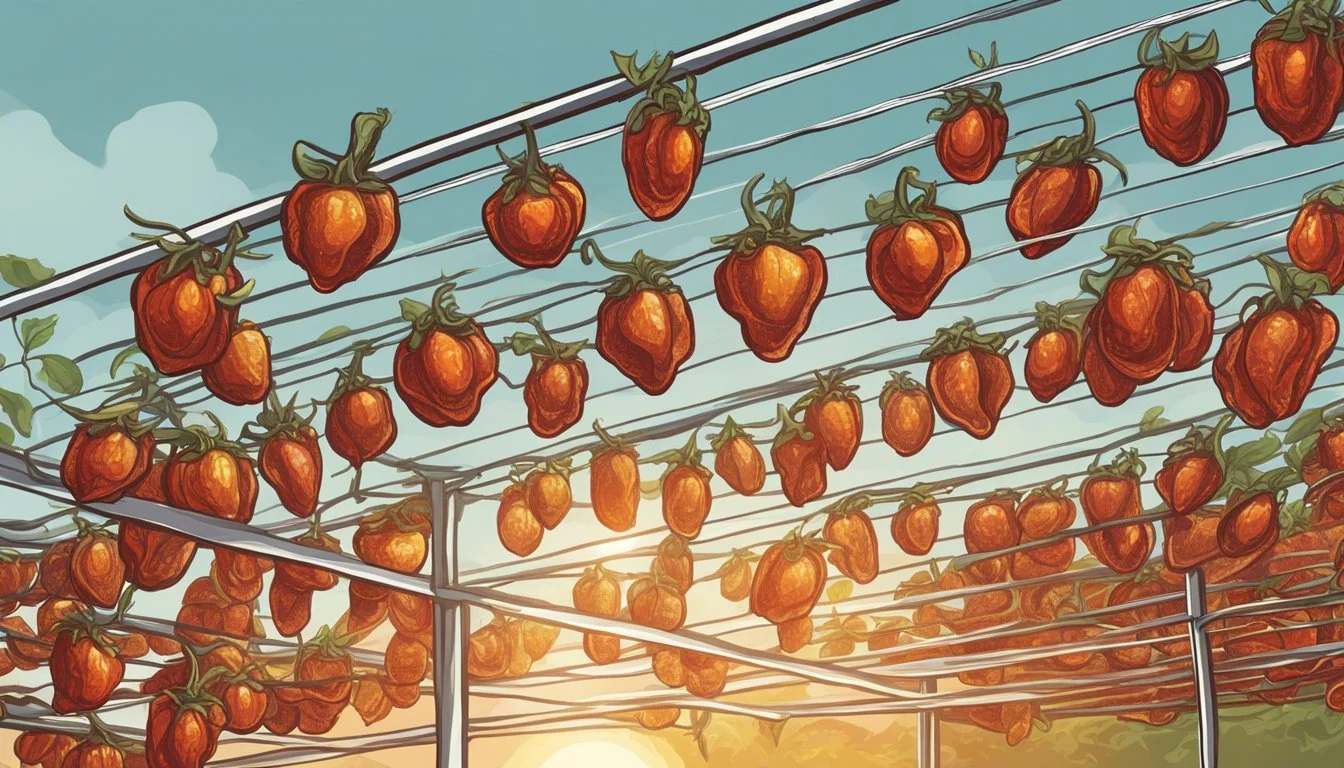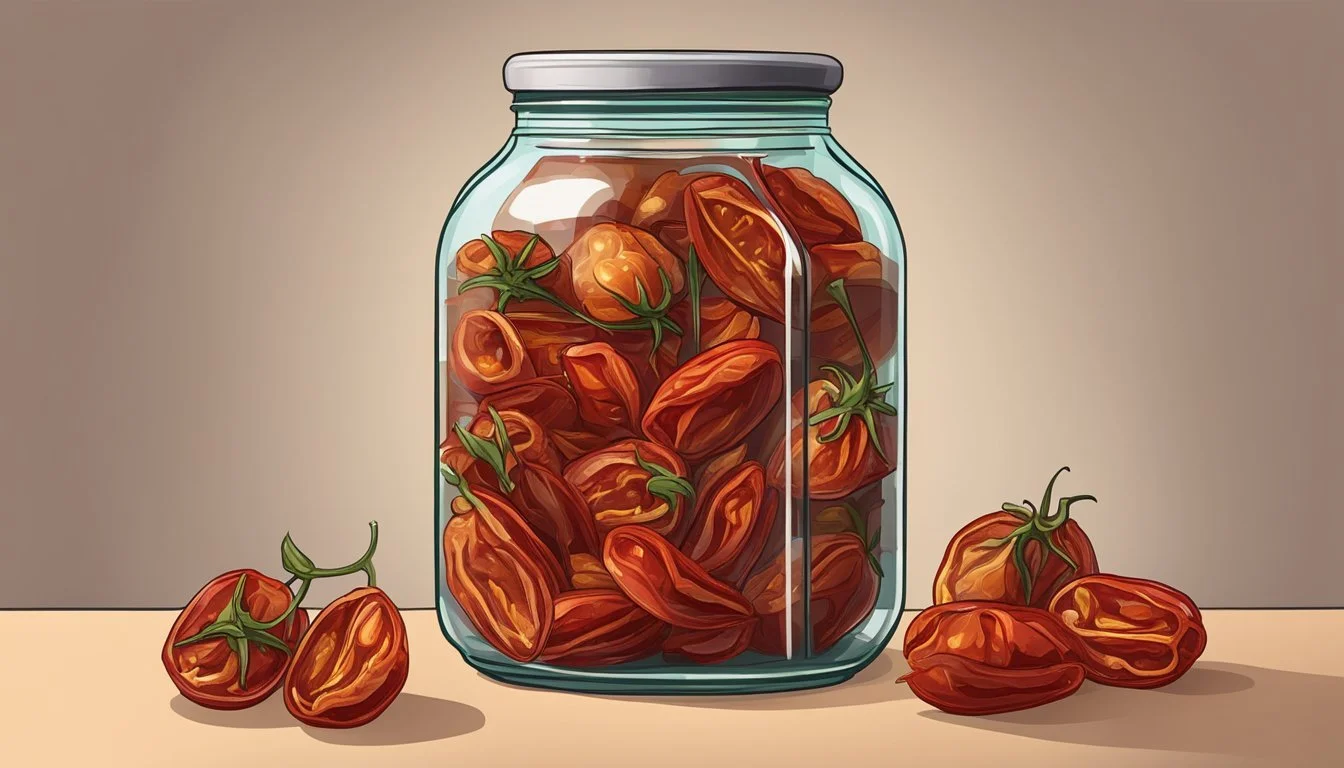How Long Do Sun-Dried Tomatoes Last?
Shelf Life and Storage Tips
Sun-dried tomatoes (how long do sun-dried tomatoes last?) are a popular ingredient in many cuisines, treasured for their intense flavor and versatility. However, like any food product, they have a shelf life that consumers should be aware of to ensure both safety and quality. The longevity of sun-dried tomatoes depends on various factors, including the drying process, packaging, storage conditions, and whether they are sold loose, in oil, or have been rehydrated.
Properly dried and stored sun-dried tomatoes can last several months without spoiling. Those that are packed in oil, with an unbroken seal, can last even longer, often up to six months. Refrigeration can extend their shelf life to about a year, while freezing can prolong it to one or two years. After opening, sun-dried tomatoes should be consumed relatively quickly, as exposure to air, moisture, and potential contaminants can accelerate spoilage. It's crucial to store them in appropriate conditions to maintain their quality over time.
Overview of Sun-Dried Tomatoes
Sun-dried tomatoes are a culinary product made by drying ripe tomatoes in the sun or through artificial methods. The result is a concentrated tomato flavor with a chewy texture. These tomatoes are treasured for their intense taste and versatility in various dishes.
Nutrient Profile: Sun-dried tomatoes are nutrient-dense, offering a range of vitamins and minerals. They are particularly rich in:
Vitamin C
Potassium
Fiber
Lycopene, a potent antioxidant
These nutrients contribute to overall health, with lycopene being linked to reducing the risk of certain diseases.
Texture and Use: The texture of sun-dried tomatoes can vary from chewy to very tough, which can be softened by rehydrating in water or adding directly to moist dishes. They are commonly used to enhance salads, pastas, pizzas, and more, imparting a burst of tomato essence to a wide array of recipes.
Forms and Varieties: Sun-dried tomatoes can be found in different forms:
Dry-packed: Often more chewy, these need to be rehydrated or used in cooking.
Oil-packed: Softer and ready to eat, they have a richer flavor from the oil.
In the culinary landscape, chefs and home cooks cherish sun-dried tomatoes not just for their flavor but also for their contribution to the nutrient content of dishes. They are convenient to use, add depth to the flavor profile, and offer a delightful texture aspect.
Benefits of Sun-Dried Tomatoes
Sun-dried tomatoes are renowned for their concentrated flavor and nutritional benefits. Their drying process intensifies both their natural sweetness and tanginess, making them a flavorful addition to a variety of dishes.
Nutrient-Dense Food: When tomatoes are sun-dried, their nutrient content becomes more concentrated. They retain essential vitamins and minerals including vitamin C, vitamin K, and potassium. Moreover, sun-dried tomatoes offer a notable amount of dietary fiber, which is beneficial for digestive health.
Rich in Antioxidants: An impressive feature of sun-dried tomatoes is their high antioxidant content. These antioxidants, including lycopene and vitamin C, can help neutralize harmful free radicals in the body. Lycopene, in particular, has been linked to various health benefits, including reduced risk of certain chronic diseases.
Quality Preservation: The process of sun-drying tomatoes naturally preserves their quality. By removing most of the moisture, the tomatoes are less susceptible to bacterial growth, which helps prolong their shelf life when stored properly.
Versatility in Cooking: Sun-dried tomatoes can enhance a dish with a burst of flavor. They are versatile, lending themselves to countless recipes, whether rehydrated or used as they are. Their robust taste adds depth to salads, pastas, pizzas, and more.
Incorporating sun-dried tomatoes into one's diet not only elevates the flavor profile of dishes but also contributes to an intake of important nutrients and antioxidants.
Types of Sun-Dried Tomatoes
Sun-dried tomatoes are categorized mainly by their preservation method and whether they are homemade or store-bought. Each type offers different qualities and shelf lives.
Oil-Packed Sun-Dried Tomatoes
Oil-packed sun-dried tomatoes are stored in jars filled with olive oil, sometimes with added spices and garlic to enhance flavor. The olive oil acts as a preservative that extends the shelf life of the tomatoes. Oil-packed varieties are often store-bought and can maintain quality for up to two years if unopened and kept in proper conditions.
Plain Sun-Dried Tomatoes
Plain sun-dried tomatoes are just the dehydrated tomatoes without additional preservatives. They can be either homemade or store-bought. When stored in an airtight container and kept in a cool, dry place, these tomatoes can last for about 6 months to a year.
Homemade vs Store-Bought
Homemade sun-dried tomatoes are typically made from fresh tomatoes like cherry or roma tomatoes, chosen for their taste and texture. The quality and freshness of homemade sun-dried tomatoes can vary and they may not last as long as store-bought ones due to differences in the drying process. Store-bought sun-dried tomatoes undergo controlled drying and packaging processes that often extend their shelf life.
Drying Process and Preservation
The drying process for tomatoes is essential for extending their usable life. Proper storage conditions further maximize their shelf life.
The Role of Drying in Preservation
Drying tomatoes involves removing most of their moisture content through dehydration, significantly slowing down the growth of microorganisms that cause decay. The absence of water diminishes the potential for mold growth and bacterial development, extending the shelf life of sun-dried tomatoes.
Storage Methods and Shelf Life
Storage methods have a profound impact on the preservation and shelf life of sun-dried tomatoes. Sealed, airtight containers ensure a minimal exposure to air and humidity. In optimal storage conditions, dried tomatoes can last:
Room temperature (dry-packed): up to 6 months.
Refrigerator (dry-packed): up to 1 year.
Freezer (dry-packed): 1-2 years.
Refrigerated (oil-packed): up to 2 years, but should be consumed within 3-4 months.
Factors Affecting Sun-Dried Tomatoes Lifespan
Factors such as temperature, light, and humidity significantly influence the lifespan of sun-dried tomatoes. They must be kept in cool, dark places to maintain their quality. Excess light can degrade the tomatoes, while high temperature and humidity can promote spoilage.
Detecting Spoilage in Sun-Dried Tomatoes
Spoiled sun-dried tomatoes often exhibit clear signs, including an off-putting smell, discoloration, or the presence of mold growth. Any noticeable changes in texture, smell, or color should raise concern, indicating the product may no longer be safe for consumption.
Storing Sun-Dried Tomatoes
Proper storage of sun-dried tomatoes is crucial for maintaining their quality and extending their shelf life. Various methods cater to different durations of storage, while always prioritizing protection from moisture and air.
Refrigeration Techniques
Refrigerating sun-dried tomatoes is essential to keeping them fresh once the package is opened. They should be stored in an airtight container, which minimizes exposure to air and maintains their texture and taste. In the refrigerator, sun-dried tomatoes can last up to one year, with the optimal temperature being moderately cool. If the tomatoes are in oil, ensure the oil level covers them completely to prevent spoilage.
Freezing Sun-Dried Tomatoes
For long-term storage, freezing is an effective method. Place the sun-dried tomatoes in a freezer-safe bag or container, squeezing out excess air before sealing. They can be stored in the freezer for 1-2 years. This method best preserves their flavor and nutritional quality, but it's important to ensure there is no moisture content in the packaging prior to freezing.
Pantry and Counter Storage
Storing sun-dried tomatoes at room temperature is suitable when they are properly dried. Choose a cool and dark place in the pantry away from direct light and sources of heat, as these can degrade the tomatoes' quality. When stored in these conditions, dry-packed sun-dried tomatoes can last for about six months.
Packaging and Containers
The choice of packaging plays a significant role in preserving sun-dried tomatoes. They should be kept in airtight containers or resealable bags to safeguard against humidity and other contaminating agents. Containers should be made of non-reactive materials, such as glass, to prevent any unwanted chemical interactions. Always check lids for proper seals, and if using bags, remove as much air as possible before sealing.
Using Sun-Dried Tomatoes in Cooking
Sun-dried tomatoes are diverse additions to a wide range of recipes, from sauces to sandwiches, and they can be rehydrated or used as-is when packed in oil. To ensure the desired texture and flavor release in the final dish, understanding the preparation process is key.
Rehydrating Sun-Dried Tomatoes
Rehydrating sun-dried tomatoes is simple and essential when not using oil-packed varieties. Place the tomatoes in a bowl of hot water or warm broth for approximately 30 minutes until they become soft and pliable. One can also use this method to enhance stocks and sauces with the flavorful soaking liquid.
Incorporating into Dishes
Once rehydrated or if already oil-packed, sun-dried tomatoes can be seamlessly incorporated into an array of dishes. They add a burst of flavor to:
Pasta dishes: Chop and add to the sauce or toss directly with the noodles.
Salads: Provide a chewy texture and tangy taste, whether julienned or chopped.
Sauces: Blend into sauces for a rich tomato essence.
Sandwiches: Layer into sandwiches for a savory depth.
In each application, the bold taste of sun-dried tomatoes elevates the overall flavor profile of the meal.
Safety and Health Considerations
When considering the longevity of sun-dried tomatoes, one must not only consider the best storage practices but also be aware of the signs of spoilage and understand the health implications of consuming spoiled food.
Preventing Foodborne Illness
To avoid foodborne illness, sun-dried tomatoes should be stored correctly. They should be kept in an airtight container or resealable bag to resist humidity and should be refrigerated to slow down bacterial growth. If sun-dried tomatoes are oil-packed, ensure that the oil covers the tomatoes completely to limit exposure to air which can lead to spoilage.
Refrigerated: Below 40°F (4°C)
Oil-packed: Ensure tomatoes are fully submerged
Humidity: Low humidity storage
Identifying Rancidity and Spoilage
Sun-dried tomatoes may become rancid or spoil due to improper storage or surpassing their expiration date. Odor and appearance can serve as indicators:
Odor: A sour or unpleasant smell is often the first sign of rancid sun-dried tomatoes.
Mold: Visible mold growth indicates spoilage and the tomatoes should not be consumed.
Texture: Moist, soft, or overly sticky sun-dried tomatoes may also indicate spoilage.
Consider these points to identify compromised sun-dried tomatoes and avoid consumption that could lead to food poisoning.
Nutritional Considerations
Sun-dried tomatoes are praised for their concentration of nutrients, such as iron and fiber. However, when they spoil, not only is their flavor compromised, but the nutritional value may also diminish. The presence of mold and bacteria on spoiled sun-dried tomatoes can pose health risks, negating the nutritional benefits. Ensure sun-dried tomatoes are consumed before the expiration date and stored according to guidelines to maintain their nutritional integrity.
Iron: Important for blood production
Fiber: Aids in digestive health
Lifecycle of Sun-Dried Tomatoes
The lifecycle of sun-dried tomatoes is a journey from the vine to pantry, with its longevity hinged on various factors including the drying process and storage methodologies. Here is how they transition and how you can identify their freshness and usability throughout their lifecycle.
From Fresh to Dried: The Lifecycle
To transform fresh tomatoes into sun-dried versions, the moisture is methodically removed either through natural sun drying or using a dehydrator. Properly dried tomatoes have a drastically extended shelf life compared to their fresh counterparts. The key is reducing moisture content without compromising the tomatoes' integrity.
Shelf Life Indicators
The lifespan of sun-dried tomatoes hinges on storage conditions:
Room temperature: Properly dried, unopened tomatoes last up to 6 months.
Refrigerator: They can last for 1 year sealed; 2 weeks to 1 month once opened.
Freezer: When frozen, their lifespan extends to 1-2 years.
To maximize shelf life, store in airtight containers away from heat and light.
Signs of Expired Sun-Dried Tomatoes
Identifying expired sun-dried tomatoes involves inspecting for:
Mold or organic growth, indicative of spoilage.
Off-odors; a sharp, sour smell is a clear sign they have gone bad.
Discoloration; any significant change suggests they should no longer be consumed.
Following these indicators ensures the use of sun-dried tomatoes at their peak quality and safety.
Conclusion
Sun-dried tomatoes are a beloved ingredient, known for their rich flavor and versatility in dishes. The shelf life of sun-dried tomatoes varies significantly based on their form and storage method. Dry-packed sun-dried tomatoes typically last up to one year when kept in a sealed container in a cool, dry place. Once the package is opened, they should be consumed within a few weeks, ideally stored in the refrigerator to maintain freshness.
For those preserved in oil, they often have a longer shelf life, potentially lasting up to two years if unopened. Like their dry-packed counterparts, once oil-packed sun-dried tomatoes are opened, their longevity diminishes, and they should be used within several weeks to ensure quality.
To summarize storage recommendations:
Dry-Packed Sun-Dried Tomatoes
Unopened: Up to 1 year in a cool, dry place.
Opened: A few weeks in the refrigerator.
Oil-Packed Sun-Dried Tomatoes
Unopened: Up to 2 years.
Opened: A few weeks in the refrigerator.
It's crucial for consumers to inspect sun-dried tomatoes before use, regardless of their storage period. Signs of spoilage can include an off smell, mold, or a notably changed texture. Proper storage is key to extending the shelf life of this ingredient and ensuring it remains a flavorsome addition to any culinary creation.











